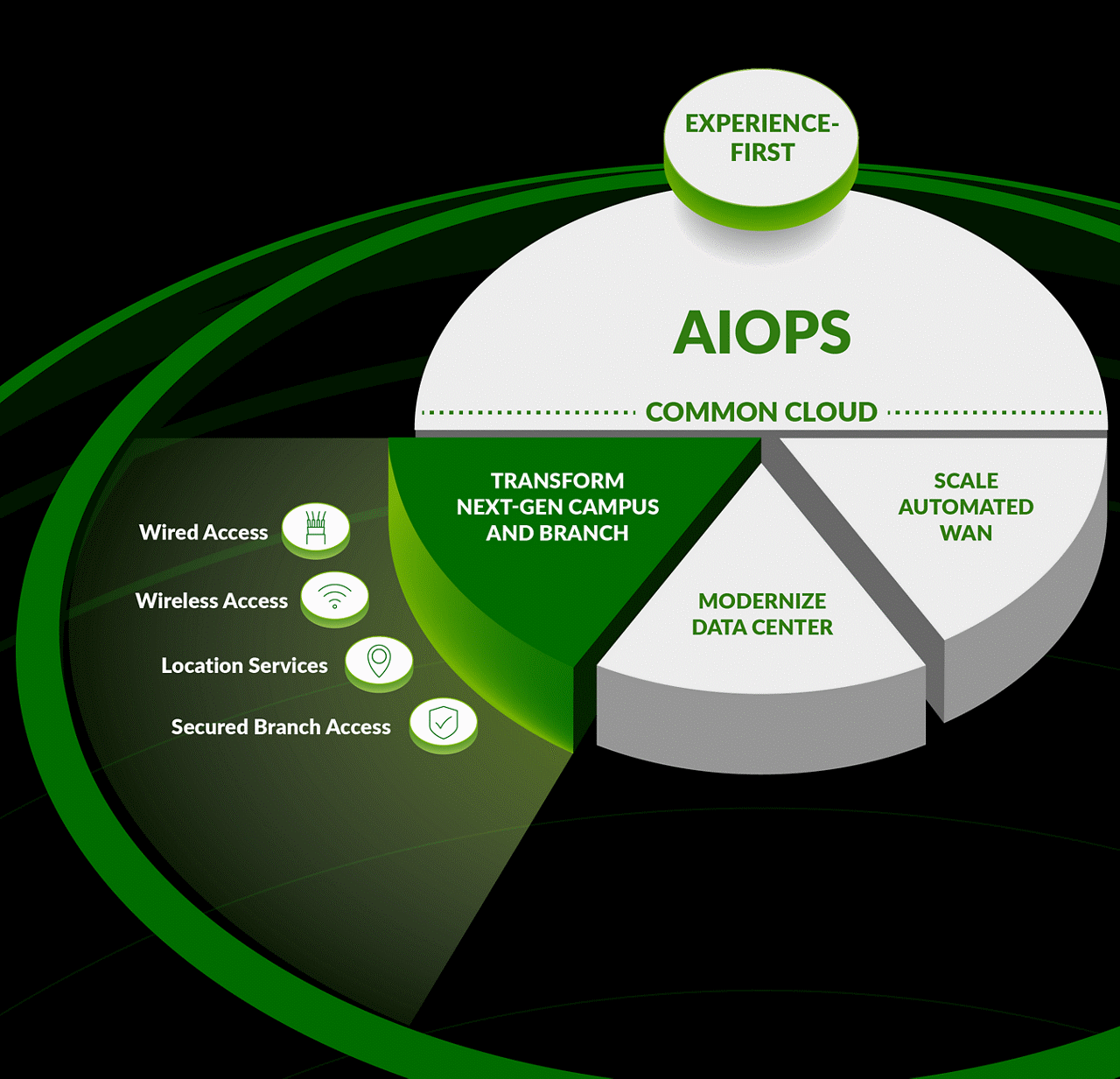Achieve unmatched scale and agility
AI-Native switching
The Juniper Mist full stack

Make the most of AI in enterprise networking
Many vendors claim their “full stack” networking solutions are using AI to streamline operations. However, many of them are actually immature, cobbled together, and offer marginal gains. Discover key considerations for harnessing real AI to truly transform campus and branch networks—and how a unified AI-Native Full Stack approach maximizes outputs.

Unleash your full network potential with a 100% open API
Leverage our 100% open API-based architecture for increased efficiency, better engagements, and robust, secure connectivity. Integrate seamlessly with essential services like Zoom, Microsoft Teams, and ServiceNow and tap into proactive troubleshooting features for quicker root cause analysis and reduced operating costs.

Only end-to-end assurance across the full stack
Juniper shifts the paradigm to measure end-user experience and with the industry’s only tunnel-free SD-WAN architecture, with real-time client-level insights correlated across the full stack to proactively resolve and ensure exceptional end user experiences. NAC plus Zero Trust ensures experiences are more secure from start to finish.
CUSTOMER SUCCESS
ServiceNow network transformation starts with Mist AI
The most successful businesses work smarter—not harder. ServiceNow, the leading digital workflow company, is an engine behind this transformation, with its streamlined and configurable workflows that help companies work more productively. Founded in 2004, ServiceNow is at the top of the digital workflows marketplace and admired for its fiscal, social, and corporate leadership.
With 75 locations and more than 22,000 employees, ServiceNow examined its own workflows and realized network automation was a necessity to accelerate its own business transformation. ServiceNow has teamed up with Juniper to migrate its network to a next-generation, full-stack wired, wireless, and SD-WAN solution.

Recommended Content
The NOW Way to Switch for Smart Buildings
Meet the cloud-native, high-power Juniper EX4400-48MXP and EX4400-48XP switches. They’re Wi-Fi 7-ready with a host of AI-Native and hardware features that take your smart buildings to the next level.
Watch now
Applying Artificial Intelligence to End-to-End Platforms for Networking Excellence
IDC Spotlight: Complexity is the enemy of networking, undercutting service integrity, security postures, system innovation, and staff productivity. A unified network platform, enhanced by native AI intelligence, simplifies engineering, streamlines operations, and saves money.
Read now
Resource Center
Background Information
Learn More
Infographics
Videos
Products
Juniper Mist AI on Us
Compare Juniper and Cisco wireless solutions
Gartner Magic Quadrant for Enterprise Wired and Wireless LAN Infrastructure, Tim Zimmerman, Christian Canales, et al., 6 March 2024.
Gartner Magic Quadrant for Indoor Location Services, Tim Zimmerman, Annette Zimmermann, February 28, 2024.
GARTNER is a registered trademark and service mark of Gartner, Inc. and/or its affiliates in the U.S. and internationally, and MAGIC QUADRANT is a registered trademark of Gartner, Inc. and/or its affiliates and are used herein with permission. All rights reserved.
Gartner does not endorse any vendor, product, or service depicted in its research publications, and does not advise technology users to select only those vendors with the highest ratings or other designation. Gartner research publications consist of the opinions of Gartner’s research organization and should not be construed as statements of fact. Gartner disclaims all warranties, expressed or implied, with respect to this research, including any warranties of merchantability or fitness for a particular purpose.
Juniper Networks is recognized as Juniper in the 2024, 2022, and 2021 Magic Quadrant for Enterprise Wired and Wireless LAN Infrastructure reports.



































